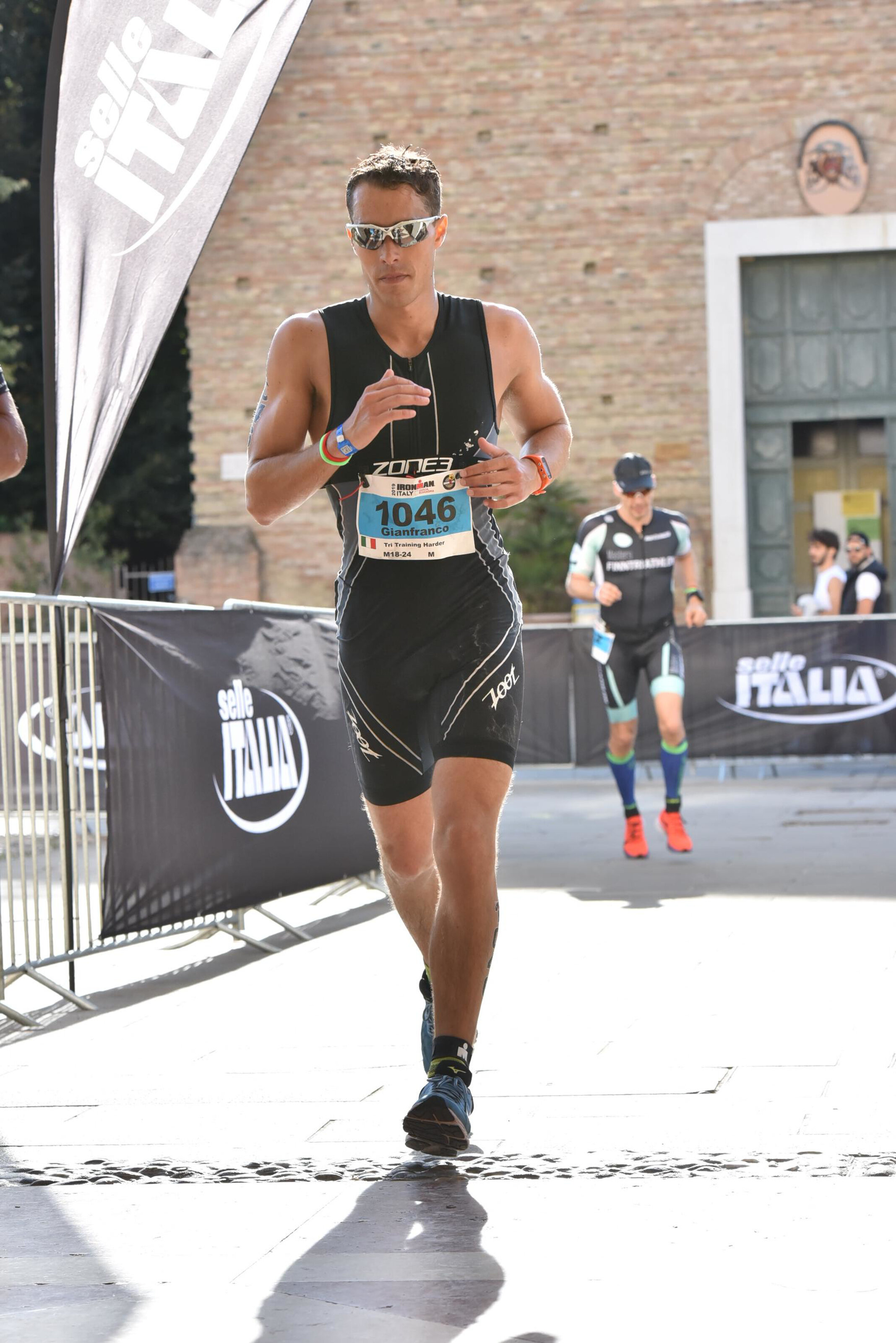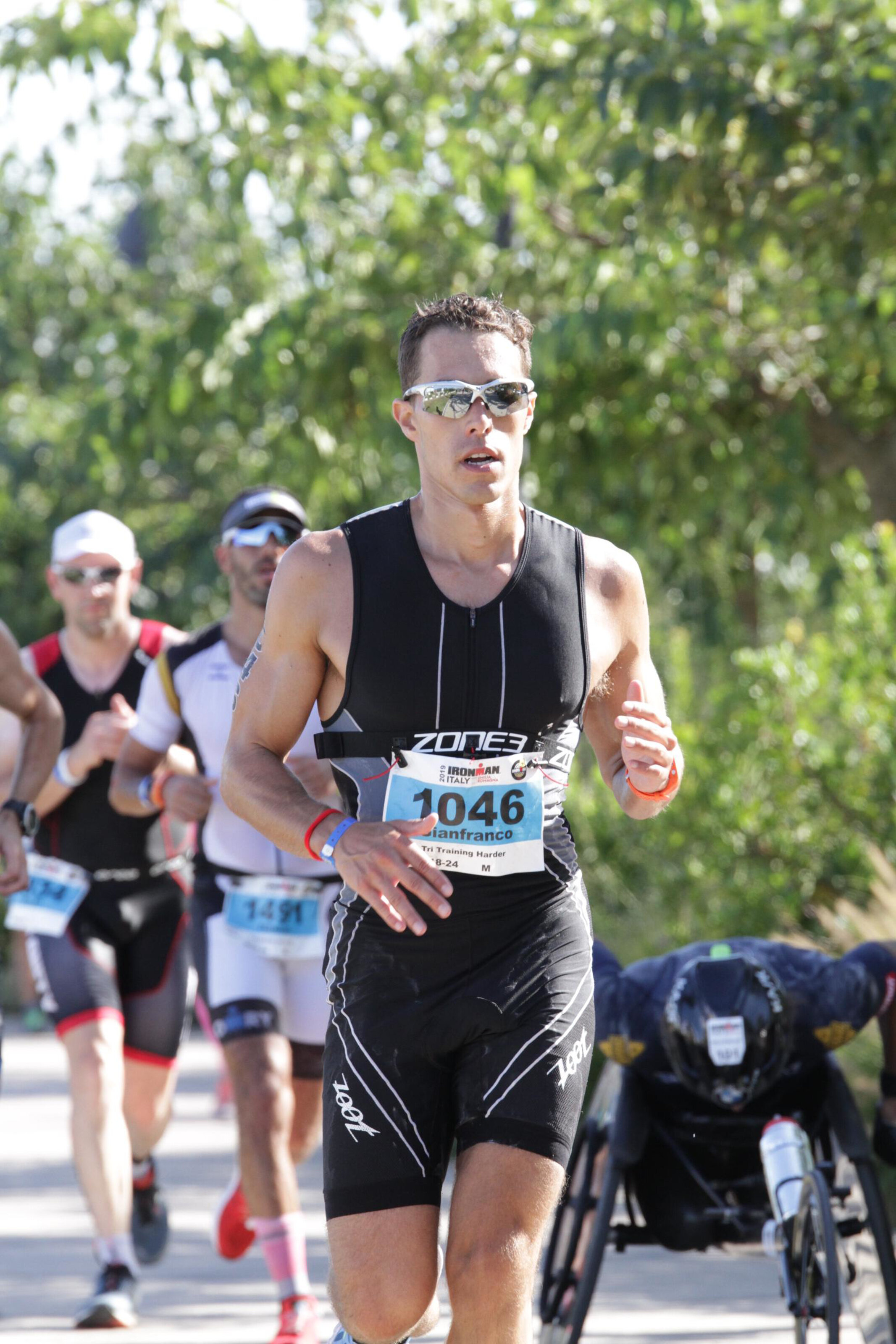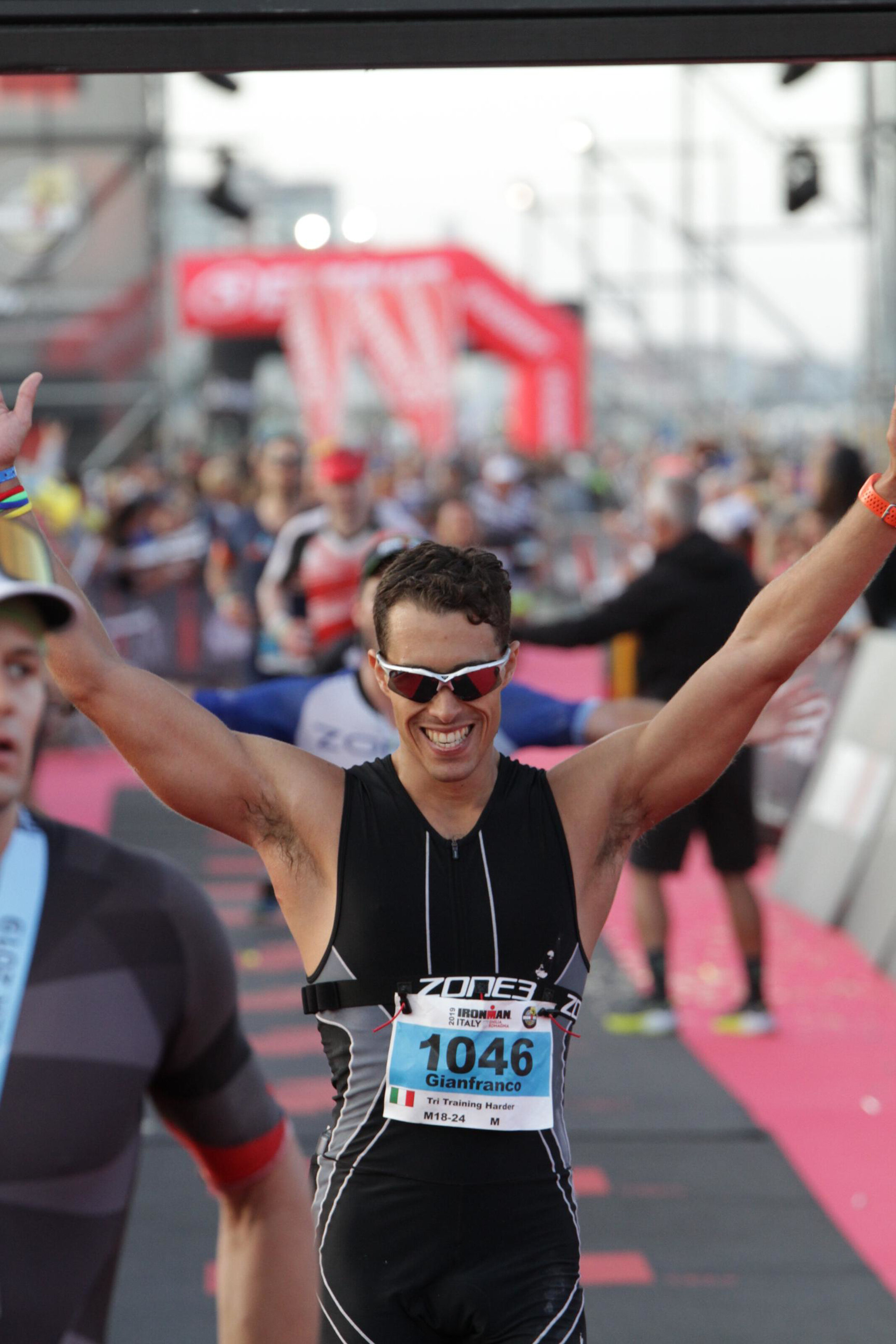Gianfranco – 10 Lessons from his first ever IRONMAN
Gianfranco, a medical student at Oxford University came to Tri Training Harder for coaching after his college offered to help support him in his charitable cause. Read about his learning points throughout his experiences and adventure at IRONMAN Italy. For more of an in-depth race report and to hear more about his cause, read his blog here.
I get to Cervia with my family on Friday at noon, just in time to register and check my cycling and running gear in the transition zone. The IRONMAN machine is impressive, the atmosphere is thrilling but it is difficult not to be low-key scared about all the hype. Swim course check out is cancelled due to rough sea so I head off to my hotel, had an early dinner and went to bed.
LESSON #1: next time I’ll aim to get there on the Thursday, so that I will have time to get my bearings and avoid going back and forth between places and building a high step count, other than not miss the race briefing.
LESSON #2: worth booking a hotel just by the transition zone/IRONMAN village, mine was 50 m from transition and it made a huge difference (especially after the race).
I sleep remarkably well, at 4.10 my alarm goes, it’s race day. I have breakfast I brought from home and at coffee down at the hotel reception. I get down to the transition zone at 5.30 to check my tyre pressure, then go back to my hotel room to start warming up as it was cold outdoors (TIP #2 coming handy already, plus if I was at the briefing as per TIP #1 I would have known that the entrance of the transition was at the opposite side from my hotel and would have combined the pressure and the nutrition trips in one). I put my tri-suit on, realise that I have to shave half a leg to put my transfers on, put my wetsuit on, and head down to the beach.
LESSON #3: it would have been good to plan race morning logistics before the actual race morning, leg shaving included.
IRONMAN Italy uses a rolling start, meaning that after the gun participants are allowed in the water in groups of 6 every 5 seconds (and not just all at once, like I feared) according to their expected finish time. I go to the sub-60 minutes pen, the fastest one, I am surrounded by lots of seasoned triathletes (a fair few wearing the golden swim hat that denotes AWA status), and the inspiring speeches and music on the speakers bring tears to my eyes (which I just about manage to push back) more than once in the 30 minutes I waited before the start. However, the emotion dissipates as soon as I run off into the waters of the Adriatic Sea, as the autopilot swimming mode comes on and I do what I trained to do. The swim is quite messy to begin with, and I also got a jellyfish sting on my face about 10 minutes in. However, after the first turn the pack becomes a bit more streamlined and I start looking for feet to draft behind to reduce drag and spotting energy. The difference between pushing and chilling in the swim is only 5 minutes, and my plan is to use the first leg as warm up and to ease into the race. Anyways, I am feeling good and I start jumping from a pair of feet to the other, trying to go around those participants who overestimate their speed and are going too slow to make the sub-1 hour swim. Eventually, I need to overtake the gold cap in front of me who is slowing down, and having lost the main pack, it takes me a long time of solo swimming to catch up with the next pair of feet. By now I am close to the shore (the distance went much faster than expected) and I am surrounded by good swimmers, confident to have met my sub-1 hour target, which I nailed pretty much bang on at my predicted 57 minutes.
LESSON #4: people over-estimate their swimming time and tend to go one tier up from what they should; if you actually are a sub-60 minute swimmer, make your way to the front of the line to avoid getting stuck behind slower athletes and to stick with a fast pack you can draft from.
TIP #4: if you, like me, have neck chafing problems, get yourself some bodyglide and be generous with it: I did not feel it then, but my neck chafe was the worst thing I had to deal with in the recovery weeks after my race.
I had decided to keep transitions as easy as possible, with no special needs bags or extra gear in my standard bags, to have one less thing on my mind. So T1 is wetsuit, hat, and googles off, helmet, shades, race belt+number and bike shoes on, and I start hopping to my bike (cycling shoes on), but not after a quick loo break. As I collect my bike, I hear my mum shouting my swim result, I hear ‘fifty..’ and ignore the rest, and confidently hop to the mount line.
LESSON #5: as my first race, I decided to take transitions easy and use them as rest in between the legs. However, in future I would like to learn to properly run with my bike and do flying mount, as people running in socks were dashing past me and my clunky running shoes!
As I start on the bike I revise my plan: first quarter easy, eat and drink; second quarter nice and steady; third quarter start catching up towards your 30 Km/h target average; last quarter strong and steady, finishing sub-6 hours. By the way, by ‘eat’ I mean drink High5 2:1 caffeinated energy drink in one of my bottles (650 grams of sugar in 800 ml volume), and by ‘drinking’ I mean have a bottle of water from each of the water stations (every 30 Km). I start very easy but soon have to switch a gear up, as the wet trisuit, low temperatures, and head wind made me feel cold and in need of a warm up. The landscape is wonderful though, I ride through the salt pans of Cervia in the sunshine and I am thankful I am getting to be where I am doing what I am doing. I notice that my average speed is already very close to 30 Km/h. Admittedly, the tarmac is smooth and fast, my tyres are nice and pumped up, and my legs are fully rested from the taper, so I ignore the watch and focus on relaxing and eating according to plan, stopping at my first station to pick my water up: I had never grabbed a bottle while riding. By the second station at 60 Km I am feeling great and grab the bottle without stopping and, as I do not feel the need to pee yet, I tackle the hill of Bertinoro with a bit of dread. The hill of Bertinoro, aka the ‘balcony’ of Emilia-Romagna, is a beautiful hill with winding roads surrounded by vineyards that lead up to the homonymous medieval citadel at its top. I do not think of myself as a good climber, but my road bike is more agile than the TT bikes that most other participants were riding, so I find myself overtaking other athletes that were flying past me just 10 minutes before on the flat motorway, which is a pretty nice confidence boost. Down the hill, back to the motorway, and my watch alerts that I am subconsciously pushing very fast average speeds; yes, I am feeling good, but I start wondering whether this will punish me later on, so I slow down a bit.
I am still hitting fast splits and am finally competitively racing a few guys on TT bikes, but from about 3 hours into the ride. I start suffering from pretty bad back and neck ache. At first I can relieve it with a few seconds out of the saddle, but the need for these breaks becomes more and more frequent and by the second hill I am pretty broken. Even if I don’t feel like it, I stop for my scheduled pee break to look after myself and stretch my lower back, and turns out I actually needed all of this. The second time up the hill is much harder than the first, possibly as I had lost company and I struggled up on my own. I take the descent as rest, and at the bottom of the hill I hit the 140 Km sign. I am struck by the thought that this is actually a very far cycle already, I have lots of fuel in the tank, and only 40 Km left to ride; immediately after, I am struck by the thought that ‘only’ 40 Km actually means more than one hour of very uncomfortable riding, which towards the end really becomes agony. I grit my teeth and to put an end to my ride 20 minutes faster than planned, in 5:40 hours.
LESSON #6: if you have never done it before, practice grabbing a water bottle that is handed to you while riding; it is not that hard, it just needed one attempt for me, but learning a new skill during your first A Race can be pretty daunting.
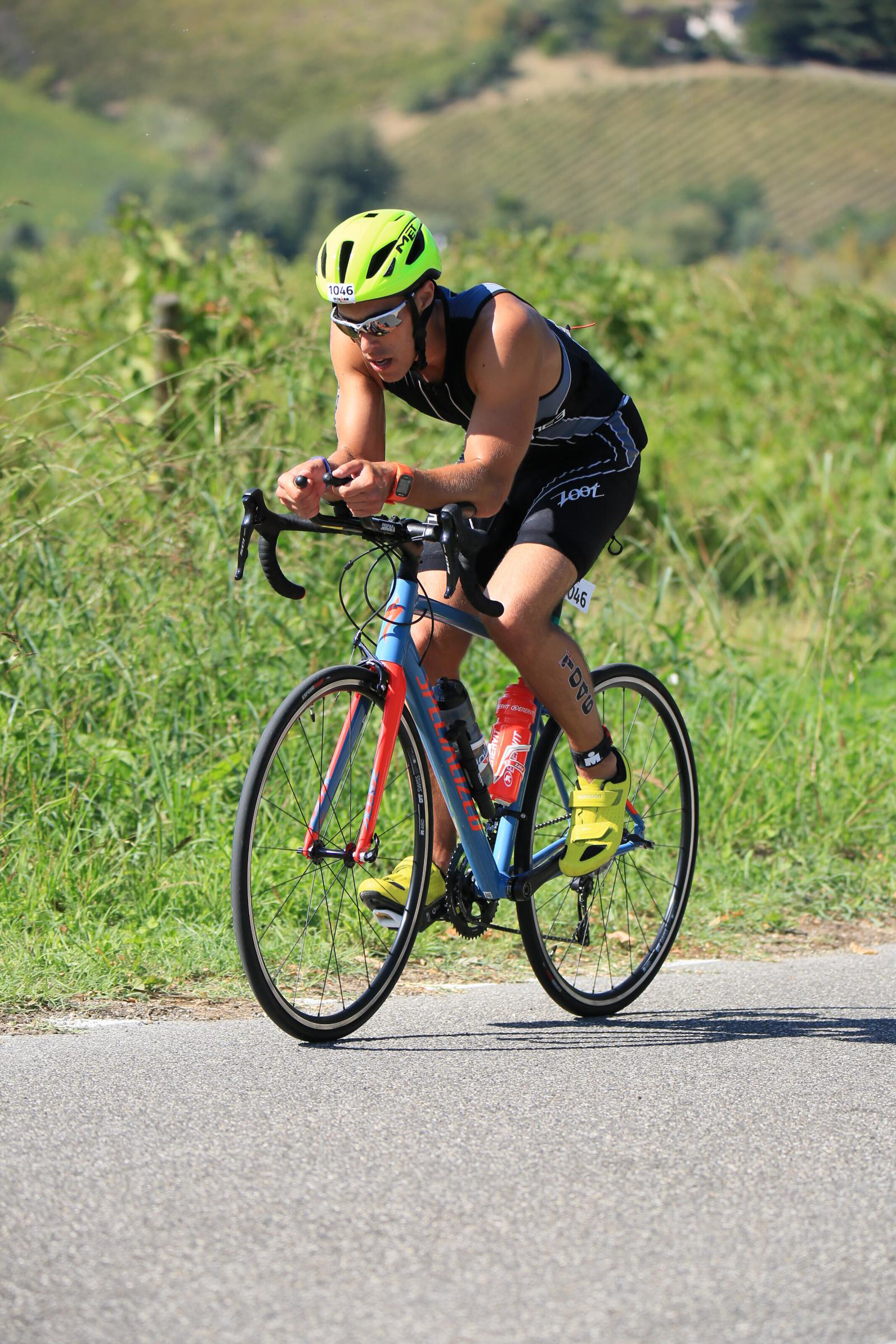
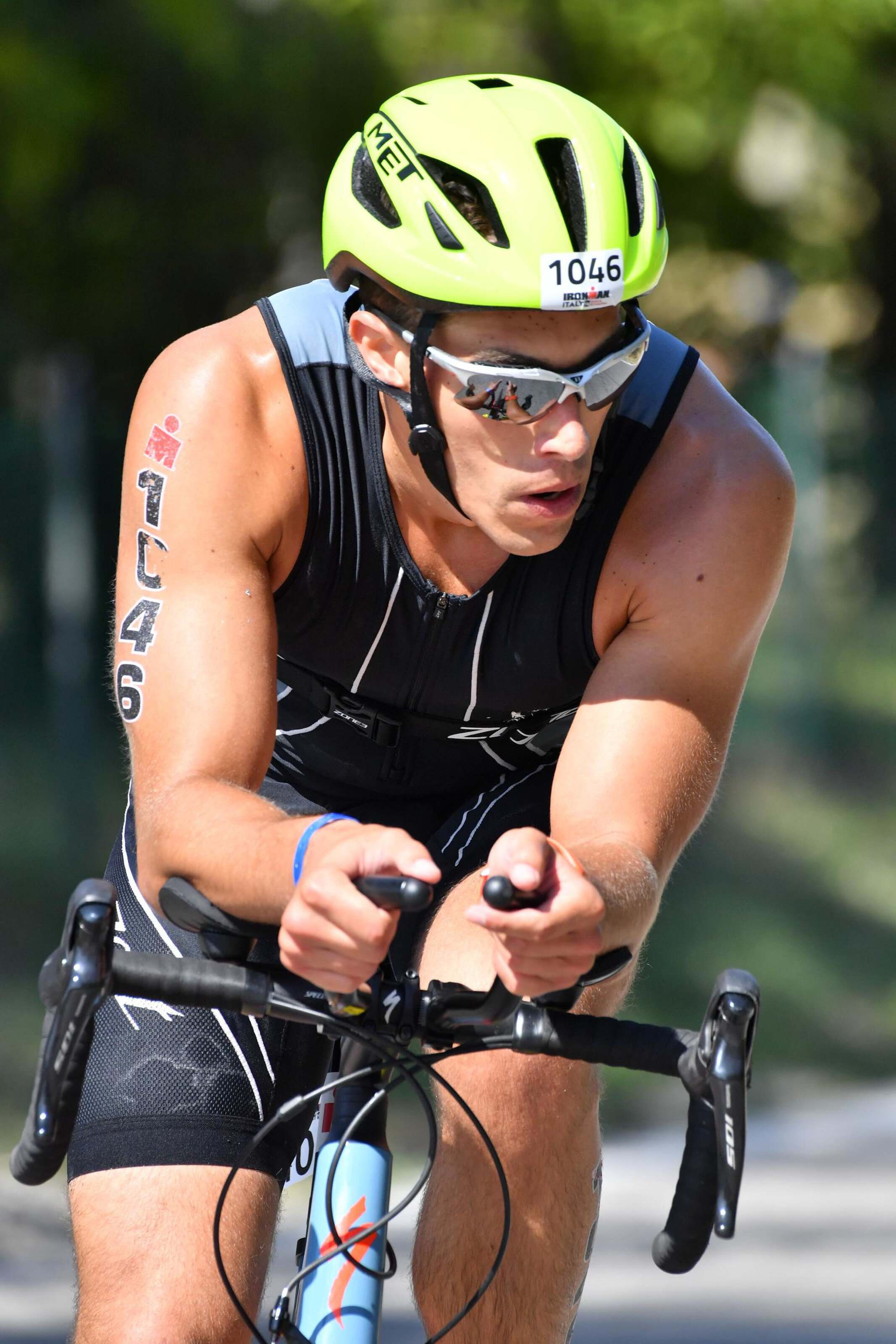
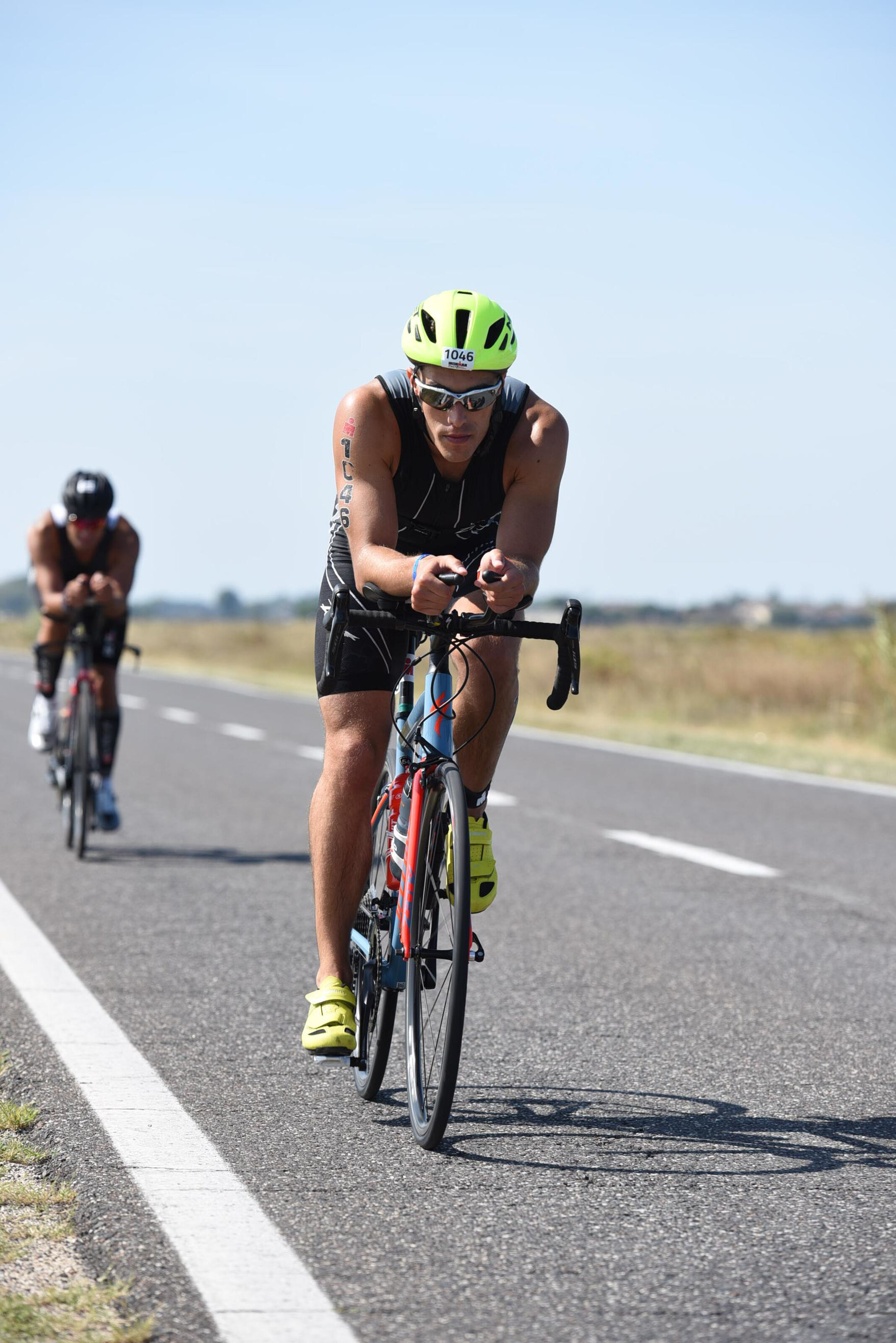

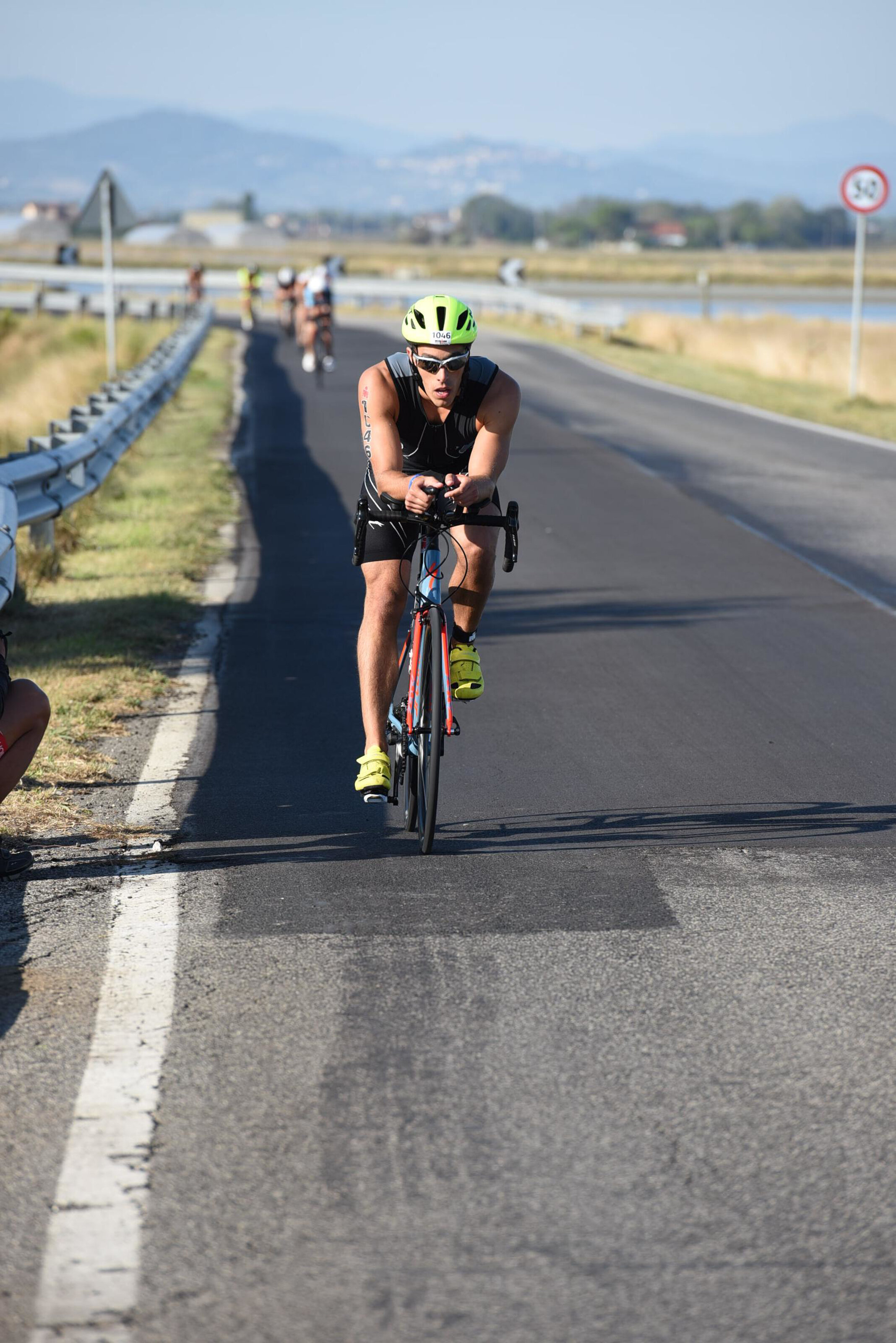
LESSON #7: this was not in the spirit of my first IRONMAN, but for future races I am going to train my handling skills and there was much time to be gained on the turns, roundabouts, and the Bertinoro descent.
T2 is predominated by the relief of stretching my legs and back, I have done well and reward myself by sitting down to change into running shoes and saying hi to my brother and girlfriend who are cheering from the sidelines. I realise I am very ahead of schedule for a sub-11 hours finish, which I had thought to be possible only with a perfect streak of good luck (not the case), and set off for the run comforted by this thought but driven by my last split target of a sub-4 hour marathon.
The marathon consists of 4x10.5 Km loops in Cervia city centre, roughly equally split going North and then back South to the big roundabout where you would start your next lap or diverge towards the finish line, with aid stations every 2.5 Km. Plan is to start easy, look after myself for the first half, then not slow down in the third lap (when exhaustion sets in and the finish line still feels out of reach), and give it all at the end when the finish line is in sight. The back pain is fading and I am feeling good, but instead of pushing I use my extra energies to fuel up with a couple of gels at the first and second aid stations. However, as I settle into race pace, the gels come back up in my mouth… It’s time to take a step back and actually stick to the conservative end of my plan this time, so I slow down a bit and ‘look after myself’. The first lap never ends, and so does the second. At least, after a bit of a break from eating and drinking, I work out that having water and cola at the aid stations works for me and will get me through the marathon. I start the third lap with a sense of dread, but this actually turns out to be alright (probably thanks to my very low expectations) and I manage to hit some good times. However, the opposite happens on my last lap. The thought of never having to go through the same landmarks again doesn’t help me reach the first aid station. Reaching the second station is even worse, but maybe this is because I am moving North and away from the finish line, at least geographically. The second and third stations are the most distant from each other, 3 Km as opposed to 2.5 Km, which is a negligible distance in training but has become a huge gap by this point. I force myself to stop obsessively looking at my watch and focus on my breathing, it’s the last station to reach and after that I have the finish line. After what felt like 1 Km I look down at my watch and I break: I have run only 0.3 Km since the previous station, and my soul shatters. My body is tired but could keep going, it is my mind that just decides I can’t do it, the only thing I can think of is to stop and walk. But then what? How many meters or minutes do I walk for before I re-start? How many meters or minutes before the next break? As I realise that stopping and restarting is just going to protract my pain, I drag myself forward to the next aid station over the longest 15 minutes of my life. It is not an understatement when I say that if it wasn’t for the people supporting me and for the bigger cause behind my race (not a triathlete, I set myself to prepare an IRONMAN in 6 months for charity) I would have probably stopped at this point. At this point I want to treat myself to a last pee break (I do not need it and know it is just going to add one minute to my finishing time, but I wanted to reward myself with a little comfort before tackling the last 2.5 Km), but there were no loos after this station. Soul shatters again, just this time I am on the promenade with the big roundabout and the finishing line actually is in sight, or so I thought. As I exit the roundabout into the beach club hosting the finish line I see a big black arch, but the guy in front of me passes it at full speed and takes a turn. Soon after I see that there actually is another arch, red this time, just a bit further down, but again the guy rushes past it. As I take the turn myself, I see a big black arch with the IRONMAN logo and the clock with the finishing time far away towards what felt like the horizon. Anyways, this time I am sure I see the finish line and I am charged by all my family members staggered along the corridor to cheer me one last time and cross the finish line of my sub-4 hour marathon and my first IRONMAN reminding myself to smile. I felt a bit of joy, but mostly the incredulity of being able to stop without negative consequences.
LESSON #8: In future, I will strive to use training to find a nutrition strategy for the marathon that I actually am comfortable with, bearing in mind what’s on offer at aid stations. I knew from training that I could tolerate gels, even if my stomach has never been too happy about them. Hoping that things will be better on race day is wishful thinking, as usually it the opposite is true. I was lucky to work out what nutrition and hydration worked for my marathon at my second attempt.
LESSON #9: Have a mission or a group of people behind you to anchor you in the dark times, as the pain -physical and mental- can be very real and may make you question how much you want to make a time purely for your own personal fulfilment. Or, at the very least, have many contingency plans but none that involves stopping and resting! If it is not even contemplated in the plan, you won’t contemplate it yourself.
One last thing. At the finish line there was a buffet that reminded me that solid foods, and not any solid foods -I am talking about delicious things like pizza and pasta-, exist in a world of liquid race diets. The stress of finishing made me stuff my face with pasta and pizza but that was a big mistake: I felt very sick and could not tolerate any solid foods without feeling nauseous for two whole days after that. Not a surprise, when I literally threw up two gels just a couple of hours prior.
So, LESSON #10: your plan does not finish when the race is over, remember to think logically about your recovery because your body will really need some love after your first IRONMAN!
Other than not tolerating solids, I could not walk or even lie down without pain and could not think straight for the first two days after the race. I really questioned how people want to do this sort of things again, and again, and again after putting themselves through such great pain. However, on the Tuesday I woke up and I was brand new, like magic. The amazing and unexpected finishing time of my first IRONMAN, 10:38:19, finally sank in, and I am now thinking of all the areas of my race plan where I could improve and make pretty significant time cuts. I hope my race report has helped you with some of the things I had to learn myself on race day and will make your race faster and smoother.
Best of luck!



